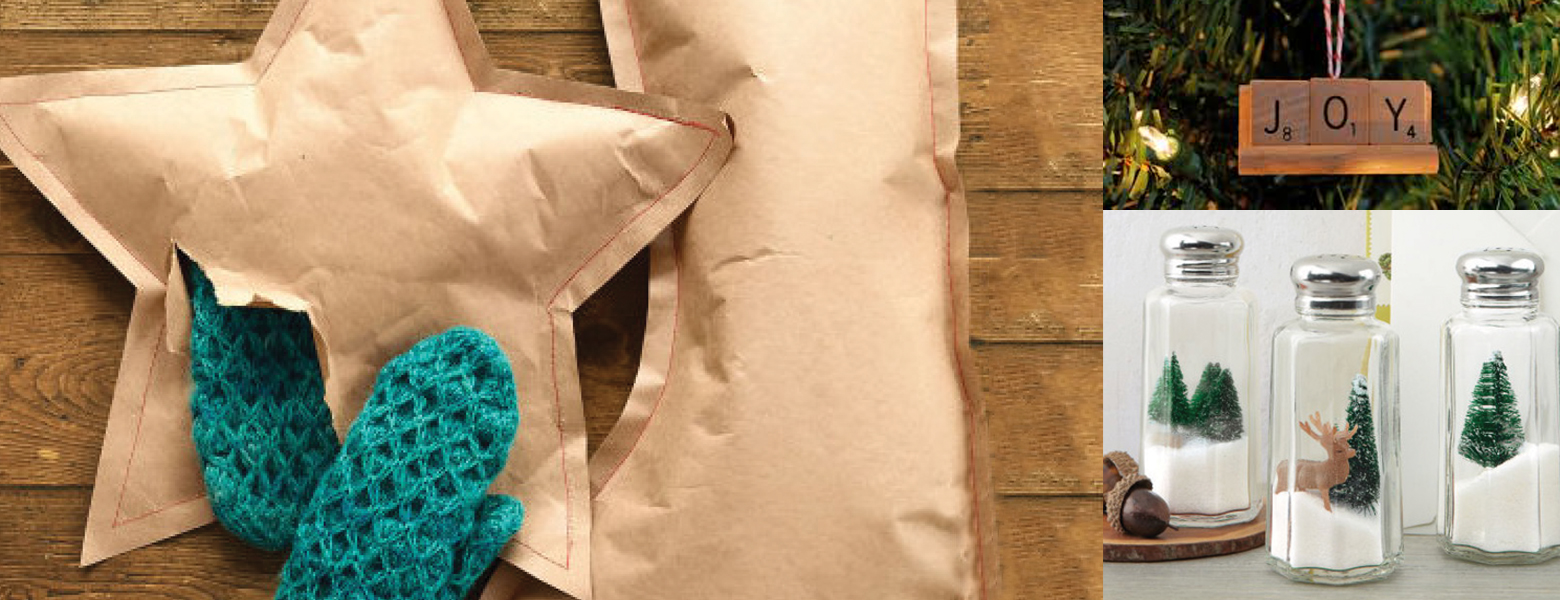
Have yourself a green Christmas
24th November 2016
It’s coming up to that time of year where we all start to get excited about the prospect of decorating our homes, dusting off those lights, tinsel and of course the tree. Or like me, losing or damaging our decorations and gift wrap from the frantic decoration take down the year before. Therefore creating an added stress this festive period, by adding a relentless trawl for new decorations and packaging once again, or some rebuying to get the most up to date and trendy decs, making it easy to see how Christmas has become one of the most expensive and wasteful times of year. But how can we reduce this? Is there a way apart from correct storage that we can help make all of our Christmas’ more sustainable for both the environment and our pockets?
Why go green?
So why is green the best way to go? There are many generic reasons why the environment needs our help this season, but to make it festive, lets have a look at some real reasons to go green at this time of year:
8 million real Christmas trees consumed each year in the UK
Yep, that many. With a shelf life of about a month in our homes, these trees, although farmed specifically for the season are bought each year and expelled just as quickly in the new year.
The average age of each Christmas tree when sold is 15 years old
Of course for each tree taken, 3 are replanted but it still takes a whopping 15 years to look like the tree we have in our homes each Christmas.
£700 million is spent each year on unwanted Christmas gifts
Meaning a general waste of gift wrap, energy to wrap and create the gift, time and money for both companies and ourselves.
On average 83 sq km of gift wrap is sold every Christmas
A staggering amount for something that is just thrown away and rarely recycled.
30% more rubbish over xmas periods
It’s true this is one of the most wasteful times of year in terms of rubbish, with most homes struggling to keep their bins from overflowing.
The brand
The environmental psyche has been around as long as we can all remember, but realistically it has only become popular in the public eye over the past ten years. And we can see many contributing factors that have helped bring this popularity about.
The Government green
The government have been a driving force behind making the green brand so well known by enforcing the recycling bin legislation, making consumers more aware than ever of their own waste, allowing us to actively help, generating more interest in how we can make a difference. Making us sieve through and separate our throwaway items has made us realise what waste companies create in their packaging and has even started to influence our buying decisions. Making this label become a background almost subconscious checklist item for us when purchasing products or services, researching if a brand’s ethics are on point environmentally.
The corporate green
For many years companies have been cashing in on this label, making the movement a sort of brand and trend that we have also started to take note of and watch out for in our buying decisions. Communicating the notion as a positive and always popping up in the news, from collection arguments, to container size, to money experts and the likes of Kirsty Allsop, making our pockets and houses more frugal. Businesses have always been aware of the ‘organic’ ‘green’ trend adding green, organic alternatives to their ranges, expanding their audience catchment.
The people
When we buy green, recycle or manage to reuse something we may even have this inherent smugness inside, a contentment that we have made a difference, it makes us feel good. We also have the confidence that we are helping our next generation and doing our part, especially now that we understand the recycling process. It also ups our social profile when talking with others, pride and a wanting to express that we have backed a brand or bought a product because of the shared ethics. When companies use the green label it also makes us feel more valued and respected that they share the same values we do, so we are more inclined to stay with a brand for this reason.
Packaging
So what are companies doing about their packaging and decorations? Are they improving their material usage or maintaining the decoration that is Christmas? Lets look at some examples.
Wasteful packaging
A very popular packaging at this time of year, the selection box and advent calendar is a long standing favourite for kids and adults alike. But lets look at the packaging used.

Generally consisting of a cardboard outer sleeve and a plastic tray that holds the product in place. However, as we can see, the product is almost belittled by the plastic tray as well as the product itself here, which is also being packaged. Is this really needed? Of course a freshness factor comes into play here but if the product is already packaged, surely we don’t need both the tray or sleeve to be as big. Can we reduce the size and reduce the material by making the tray into the cardboard net of some sort to reduce this wasteful solution?
The advent calendar
Another holiday must, however isn’t the quantity of chocolate to the size of the calendar box a waste? Can this be reduced dramatically making it a cuter smaller calendar? Of course product freshness is another contributing factor here but the material could at least be reduced by half. Why not purchase a unique say wooden advent calendar and add your own treats? This then reduces both cost and wastage.
Other wasteful packaging solutions
Green packaging
Of course there are those brands that just get it right and so we’ve added some of the examples below along with some lovely eco friendly, recycled decoration and packaging solutions to have a go at this Christmas including a couple of ideas from the team.
Most companies favour the design change, not actually adding any extra packaging, but just the design of their product, which although may cost money on the company’s end, doesn’t add anything more to landfill sites. And most of the time works more than creating a specific piece of packaging for one season in the year.


The team’s solutions

A great idea for left over sacks of meshing and clementine peel this season. Bake the peel in the oven to release its oils and wrap them up in leftover bits of material as a fragrant bauble for your tree, or to spruce up the Christmas spirit through scent this holiday.
The Recycled Bow
Save the ripped pieces of paper, cut them into squares and concertina fold them, add a little tape and you have your bows for next year’s gifts, making it more personal and rustic.
Header image by Bill Frymire





